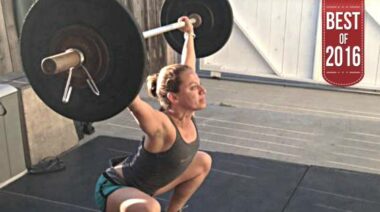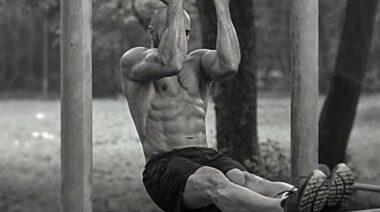Coaches have understood the importance of change of direction maneuvers, such as cutting drills, for nearly every sport. Until a recent Journal of Strength and Conditioning Research study, though, we didn’t know what biomechanical factors were most important.
While cardio and strength training are great methods to combine with skill work to develop athletes, certain conditioning drills that work as hybrids between strength and skill may be key for separating winning teams from the rest. Out of all maneuvers in sports that involve running, the most physically demanding is generally when a change of direction occurs, especially when the change needs to occur quickly.
In the Journal study, researchers tested Gaelic hurling players on their ability to make a 75-degree turn. The athletes ran five meters, cut back at a sharp angle, and ran five more meters to finish.
Their times were calculated and then compared against a host of kinetic and kinematic variables that are too numerous to list, so I will briefly describe them.
- Kinetic Variables: The kinetic variables had to do with the athlete’s movement when also taking into account their energy and mass. Examples of kinetic variables studied were ground reaction forces and concentric hip power.
- Kinematic Variables: The kinematic variables were concerned with movement but not energy or mass. The range of motion of various joints is one example of a kinematic factor.
Peak ankle power had the greatest degree of correlation to success in the cutting maneuver, and by quite a lot. In fact, the researchers stated that ankle power all by itself explains 59% of the variation in cutting scores. Ankle power contributes not just to change of direction, but also to sprinting, which is why it’s so significant.
Because of the increased directional component, there were other factors involved that may not normally be represented by a straight sprint. Lateral pelvic tilt (meaning the tilt of the hip on the opposite side of the leg pushing against the ground) was one of the factors, and athletes with less lateral tilt performed better. Trunk rotation was the final factor, and the researchers found athletes who could turn their trunk in the proper direction before their lower body experienced faster times.
It would be interesting to see similar tests performed on complete reversal. A complete reversal is basically a change of direction back to where the participants came from. Complete reversals require the athlete to remain low, and are single leg dependent. I would guess that pelvis stabilization would be very important there as well, but the emphasis on power would move up the leg. Coaches could also use these results to create plays that suit their players’ strengths.
So when cutting, many of the same attributes that make an athlete good at acceleration will also benefit them in changing direction. However, due to the directional forces, greater stability is required. The researchers recommend working on plyometrics such as hurdles and depth jumps that involve as little countermovement as possible to develop improved ground contact and ankle power. For hip stability and pelvic control, use exercises like hip bridgs, side lunges, and pistol squats.
References:
1. Brendan Marshall, et. al., “Biomechanical factors associated with time to complete a change of direction cutting maneuver,” Journal of Strength and Conditioning Research, DOI: 10.1519/JSC.0000000000000463
Photo courtesy of Shutterstock.






